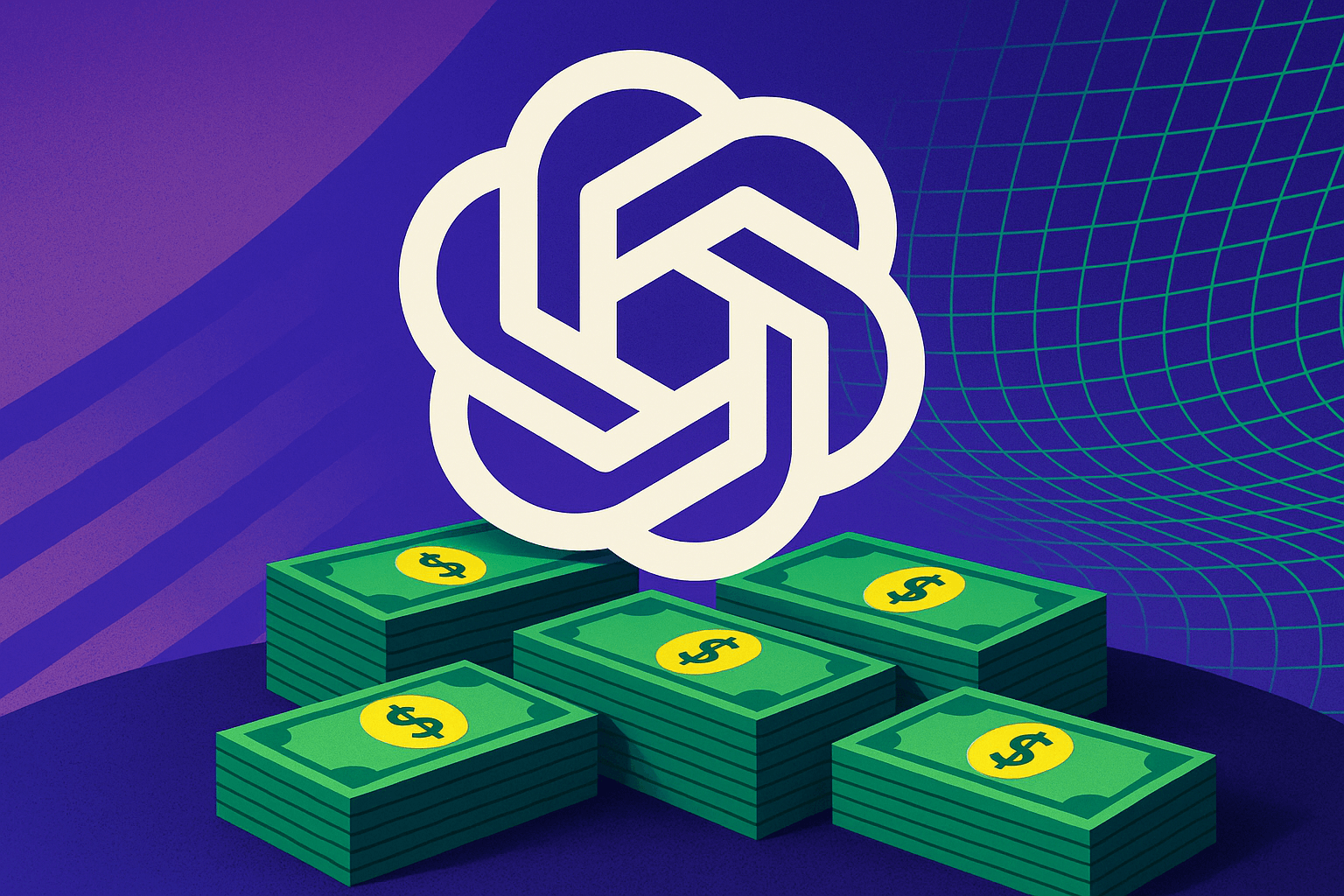OpenAI reportedly plans to grow revenue from $4 billion to $174 billion by 2030

Key Points
- OpenAI projects annual revenue of $125 billion by 2029, with nearly half expected to come from future AI agents and new monetization of free users.
- AI agents such as "Operator" could bring in up to $29 billion, with some variants priced as high as $20,000 per month; monetizing free users is set to start in 2026 and could add $25 billion by 2029.
- The company also anticipates strong growth from existing products: revenue from ChatGPT subscriptions is forecast to rise from $8 billion to $50 billion, and API sales are expected to grow from $2 billion to $22 billion.
OpenAI is reportedly projecting a dramatic increase in annual revenue, from approximately $4 billion in 2024 to $174 billion by 2030. A significant portion of this growth is expected to come from two products that do not yet exist.
According to internal documents reviewed by The Information, the company expects to reach $125 billion in annual sales by 2029, with continued growth the following year. While current offerings—such as ChatGPT subscriptions and API access—account for most of OpenAI’s existing revenue, the company reportedly anticipates that future expansion will be driven primarily by the introduction of AI agents and monetization of its free user base. In 2024, OpenAI’s revenue reportedly totaled $3.7 billion, up from roughly $1 billion in 2023.
AI agents forecasted to generate nearly a quarter of future revenue
A significant portion of the company’s projected growth is attributed to a new product category: AI agents. These agents, like OpenAI's Operator, are designed to carry out tasks autonomously on behalf of users. Revenue from agents is expected to rise from $3 billion in 2025 to $29 billion in 2029—representing nearly one-quarter of total projected revenue that year.
Pricing for individual agents is reportedly set between $2,000 and $20,000 per month. OpenAI also plans to integrate Operator more deeply into ChatGPT.
Softbank is planning to invest $3 billion annually in OpenAI’s agent products, and the two companies intend to launch a joint venture in Japan under the name "Cristal Intelligence." Early partners, including Uber, are already receiving aggregated usage data from OpenAI’s agents.
Free user monetization expected to begin in 2026
OpenAI also plans to begin generating revenue from users who currently access ChatGPT for free. By 2029, this group is projected to contribute $25 billion in revenue, or 20% of the company’s total.
As of now, OpenAI has not finalized how it will monetize free users. Reported options include affiliate links—such as redirecting users to e-commerce platforms—and traditional advertising. However, affiliate marketing does not appear to be a particular strength of LLM-based research. Monetization efforts are scheduled to begin in 2026.
Besides new products, OpenAI’s existing offerings are also expected to grow significantly. ChatGPT subscriptions, currently priced between $20 and $200 per month, are projected to generate $50 billion in revenue by 2029, up from $8 billion in 2025. API sales to businesses are forecasted to increase from $2 billion to $22 billion over the same period.
| Year | ChatGPT subscriptions | API access | Agents | New products (incl. free users) | Total turnover |
|---|---|---|---|---|---|
| 2023 | ~1 billion $ | - | - | - | 1 billion $ |
| 2024 | ~$3.5 billion | ~$0.5 billion | - | - | 4 billion $ |
| 2025 | ~8 bn $ | ~2 billion $ | ~3 bn $ | - | 13 billion $ |
| 2026 | ~14 billion $ | ~$5 billion | ~6 billion $ | ~4 bn $ | 29 billion $ |
| 2027 | ~24 billion $ | ~12 billion $ | ~$10 billion | ~8 billion $ | 54 billion $ |
| 2028 | ~38 billion $ | ~20 billion $ | ~18 billion $ | ~10 billion $ | 86 billion $ |
| 2029 | ~50 billion $ | ~22 billion $ | ~28 billion $ | ~25 billion $ | 125 billion $ |
Source: OpenAI's revenue projections according to The Information, Winter 2025
By 2030, OpenAI reportedly expects to reach three billion monthly active users, with two billion engaging weekly and 900 million using its products daily. Currently, ChatGPT has about 500 million weekly users, fewer than 5% of whom were paying customers, according to The Information.
OpenAI is also considering replacing ChatGPT’s current flat-rate model with usage-based billing. The background to this is apparently that even the most expensive premium tariff of up to 200 US dollars per month is a loss-making business for intensive users, according to CEO Sam Altman. Switching to billing based on actual usage could therefore lead to a further increase in revenue.
According to The Information, OpenAI expects to operate at a cumulative negative cash flow of $46 billion through 2028, driven in part by the high cost of training and running its models. The company projects it will reach break-even in 2029, with a positive cash flow of nearly $12 billion. Gross margin is expected to improve from 40% in 2023 to nearly 70% by 2029. Beginning in 2030, inference costs are projected to rise more slowly—at about 30% per year.
Beyond language models and chat interfaces, OpenAI is developing products in image, audio, and video generation. The company is also exploring robotics and proprietary AI chips, both of which could serve as future revenue sources.
AI News Without the Hype – Curated by Humans
As a THE DECODER subscriber, you get ad-free reading, our weekly AI newsletter, the exclusive "AI Radar" Frontier Report 6× per year, access to comments, and our complete archive.
Subscribe now